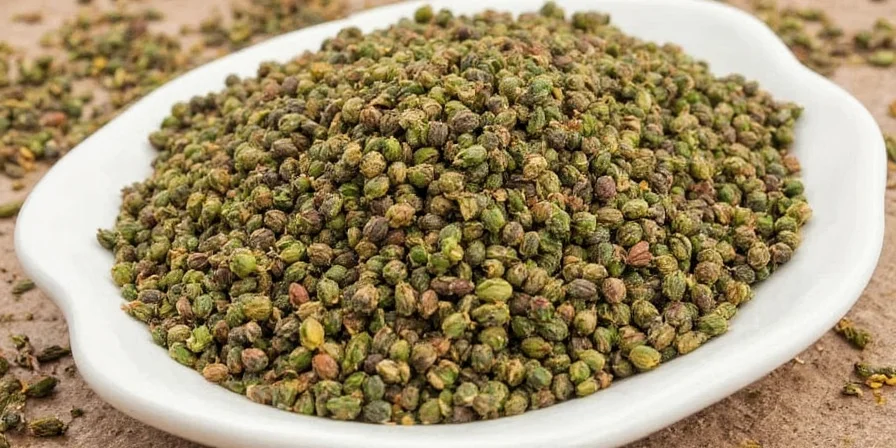
Yes, most juniper berries are edible, but only Juniperus communis is safe for culinary use. Many foragers and home cooks mistakenly assume all blue berries are safe, but consuming the wrong species (like Juniperus sabina) can cause severe gastrointestinal issues. This guide delivers exactly what you need to know: which varieties are edible, how to use them safely in cooking, and why they're experiencing a culinary revival.
Juniper berries offer a distinctive pine-citrus flavor that elevates everything from meats to cocktails. Unlike many exotic spices, they're sustainably wild-harvested with minimal environmental impact. This practical guide cuts through botanical confusion to give you actionable information for using juniper berries safely and effectively in your kitchen.
Are Juniper Berries Edible? Safety First
Not all juniper berries are safe to eat. Here's what you must know before using them:
- Safe for consumption: Only Juniperus communis (common juniper) berries are culinary-safe—look for blue-black berries with a waxy coating
- Unsafe varieties: Juniperus virginiana (eastern red cedar) has reddish berries and is toxic when consumed
- Safety threshold: Up to 1 gram of raw berries is safe for most adults; cooking reduces thujone content by 40%

When foraging, always verify identification using these markers:
- Blue-black color with white "bloom" (powdery coating)
- Growing on evergreen shrubs with needle-like leaves in whorls of 3
- Avoid any plants with red or orange berries
What Does Juniper Taste Like?
Juniper delivers a complex flavor profile: crisp pine forest meeting sun-ripened citrus, with peppery warmth. Unlike standardized supermarket spices, its flavor varies by region—Alpine berries exhibit intense resinous notes, while coastal varieties lean citrus-forward.

Cooking transforms the flavor: raw berries have sharper pine notes that mellow into complex citrus-wood tones when heated. Over-toasting creates bitterness, so keep heat below 95°C (203°F) for optimal flavor.
7 Practical Ways to Use Juniper Berries in Cooking
- Crushed rub for meats: Grind 6 berries with 1 tsp black pepper and 2 tsp salt for game meats or poultry
- Quick-pickled vegetables: Add 3 crushed berries per cup of brine for elevated pickles
- Juniper-infused vinegar: Steep 10 berries in 1 cup vinegar for 2 weeks, then strain
- Winter cocktail syrup: Simmer 20 berries in 1 cup simple syrup for non-alcoholic beverages
- Forest compound butter: Blend 1 tsp crushed berries with 1 stick butter, lemon zest, and thyme
- Wild berry jam enhancement: Add 5 berries to blackberry or elderberry preserves
- Sourdough flavor booster: Incorporate 1 tsp crushed berries into rye starter

Perfect Flavor Pairings for Juniper
| Flavor Profile | Best Pairings |
|---|---|
| Earthy & Herbal | Mushrooms, rosemary, sage, thyme |
| Citrusy & Bright | Lemon zest, orange peel, fennel |
| Piney & Resinous | Garlic, smoked paprika, black pepper |
Pro Tips: Crushing, Toasting, and Storing

Maximize flavor extraction with these kitchen-tested techniques:
- Crushing methods: Use mortar for stews (releases oils gradually) or rolling pin for rubs (creates fine particles)
- Toasting precision: Heat berries 60-90 seconds at 300°F (150°C)—exceeding 95°C triggers bitter terpene degradation
- Storage secrets: Preserve volatile oils in oxygen-free containers; refrigeration extends potency to 18 months
Juniper Berries vs. Common Substitutes
When juniper isn't available, try these alternatives (none perfectly replicate its full profile):
| Substitute | Flavor Match | Best Applications |
|---|---|---|
| Fennel Seeds | Mildly similar; more licorice-forward | Pickling, sausages |
| Black Pepper + Rosemary | Can mimic earthy and piney notes | Meat rubs, stews |
| Dried Bay Leaves | Less potent, more floral | Soups, stocks |
| Cardamom Pods | More sweet-spicy, adds aromatic depth | Stews, braised meats |
Can Pregnant Women Eat Juniper Berries?
Medical consensus advises strict moderation (under 1g daily). Avoid therapeutic doses due to uterine stimulant properties in concentrated forms. For cooking applications like flavoring meats or vegetables, the small amounts used (typically 3-6 berries per dish) are generally considered safe.
Juniper's Culinary History: More Than Just Gin

While juniper defines gin (EU law requires minimum 0.01% juniper oil), its culinary applications dwarf cocktail use. Egyptians employed them in mummification, Greek physicians prescribed them for vision enhancement, and during plague outbreaks, Europeans burned juniper branches as antimicrobial incense.
Today, sustainable wild harvesting in Nordic regions preserves ancestral knowledge while supporting biodiversity. Modern relevance shines in zero-waste cooking movements, where foraged juniper reduces reliance on imported spices.
How to Identify and Harvest Juniper Berries
Juniperus communis requires patience—it takes 3+ years to produce harvestable berries. If growing at home, ensure:
- Acidic soil (pH 4.5-5.5)
- Full sun exposure (6+ hours daily)
- Well-draining soil to prevent root rot
Harvest only fully blue-black berries in late autumn when flavor peaks. Avoid unripe green berries that cause bitterness.
FAQs: Quick Answers to Top Juniper Berry Questions
- Can juniper berries replace black pepper?
- Yes, but create distinct flavor profiles—use 1:3 ratio (1 part juniper to 3 parts pepper) for balanced earthiness.
- Why do my juniper berries taste bitter?
- Bitterness indicates over-toasting or unripe berries. Opt for fully blue-black specimens and toast under 90 seconds at low heat.
- How long do juniper berries last?
- Properly stored (airtight, cool, dark), they retain potency for 12-18 months. Freeze for extended shelf life.
- Can I eat juniper berries raw?
- Yes in small quantities (under 1g), but cooking reduces thujone content and improves flavor. Never consume large amounts raw.
- What's the difference between juniper berries and capers?
- Totally different plants—capers are flower buds, while juniper berries are actual berries with pine-citrus flavor.











 浙公网安备
33010002000092号
浙公网安备
33010002000092号 浙B2-20120091-4
浙B2-20120091-4